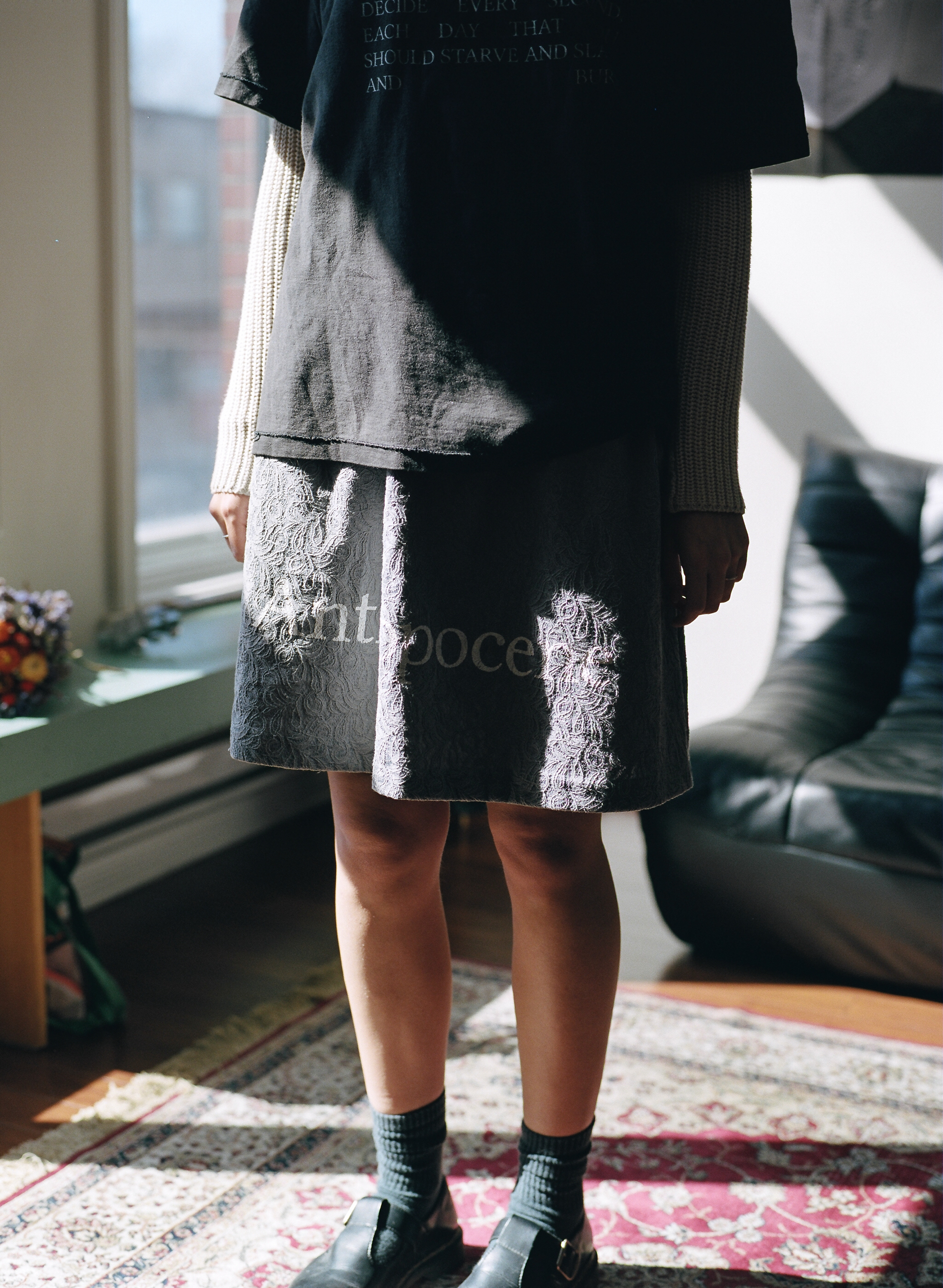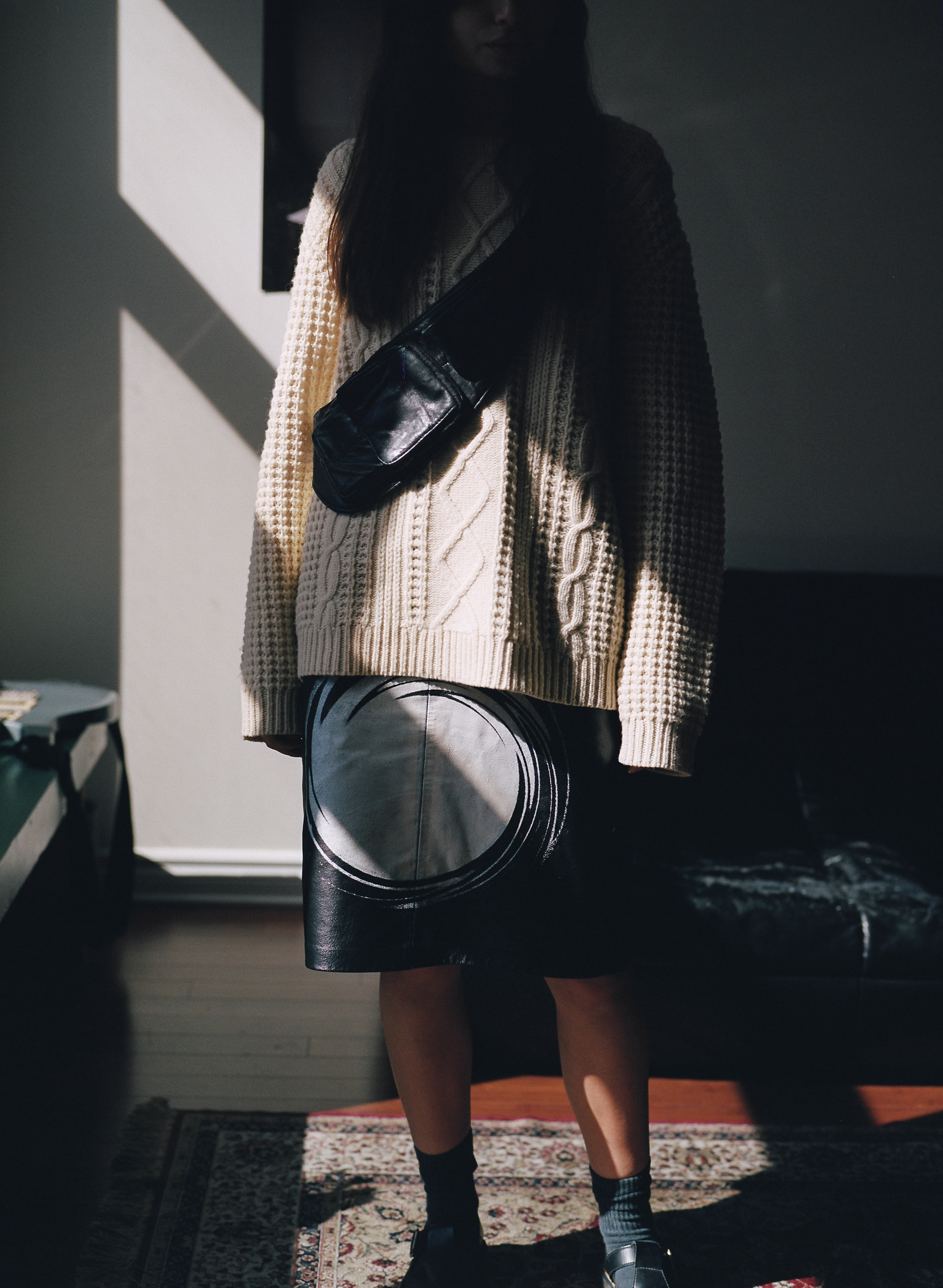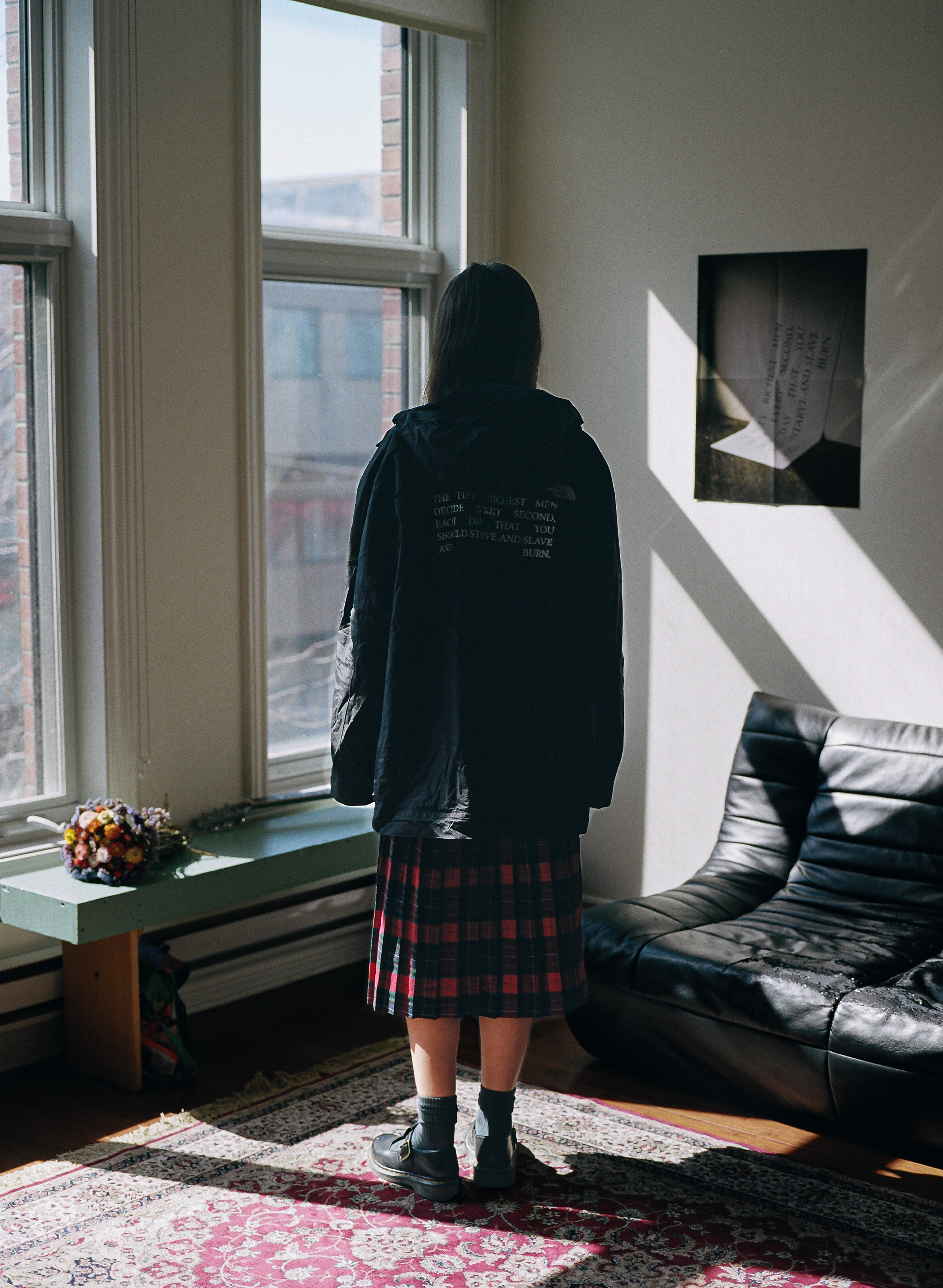Anthropocene
Nothing here is new.
the value of Art is held in its ability to communicate. the Artist must imbue the piece with “recognition” not strictly “understanding”, and it is this “recognition” that the Viewer relates to, even if neither the Artist nor the Viewer can define a concrete meaning.
an Artist is a person who distills an unknowable (perhaps even to themselves) mixture of feelings and thoughts into a piece of Art. as long as someone somewhere can recognize the initial experience within themselves, the work is Art and has value. this can be a painting or a song, a film, a chair, a movement or even a way of saying hello. the medium is inconsequential to the value.
this value is what evokes powerful “recognition” from viewers. like the sharing of written or vocal ideas, these artworks have the potential to evolve culture, human relationships and our understanding of ourselves. an effective application of “recognition” elevates the piece to a symbol which communicates this higher level concept more efficiently. this effect differs from human to human and depends on the time and place that it is experienced. timeless art, as much as anything can, touches on the “recognition” of universal human experiences and thus holds the potential to communicate with the most people over the most time.
because the art market is tied to, and increasingly morphing directly into capital, art has become indifferent to the human experience. as money has no meaning except in its implication of violence (defined by David Graeber as the issuing country’s ability to vaporize you anywhere, anytime) and in its use for trade, art too starts to share these traits. often a painting can be sold for hundreds of millions of dollars and amount to nothing more than successful tax evasion. in turn, the art market has responded by gladly obscuring the actual value of art and instead focusing on “process” or useless background context.
many of the highest selling artists today utilize assembly lines of underpaid Artists manufacturing their work and rarely even conceptualize or touch their pieces (yet claim total recognition). this reflects the capitalist ideal where one uses their excess capital (normally acquired via nepotism or in rarer cases, meaningful early work) to apply as little effort and money to create as much profit as possible. this process is alienating and when you see this work you feel the implicit violence. the opposite of recognition: that you are not cared for at all, the creator hates you. they certainly don’t care about you enough to acknowledge your humanity.
this has eroded the public’s conception of art. its very definition existing in popular culture as doublespeak, meant to distract from the fact that the art market is completely unable to create value under the capitalist system. culturally this has led many to claim to “not understand” art when in reality they understand perfectly - there is no grand “meaning”. the only thing to understand is the same thing one might derive from a dollar bill. that the structure of our world is totally corrupt and all of its systems are in service of the violent domination of the many by the few. when you hear a song made for attention and not for “recognition” you feel this. when you see a “future relic” you feel this. in many ways it surrounds us.
just as we cannot save our governments by improving the quality of politicians in power, we cannot change the art world by changing the gatekeepers. the only path to an art criticism and market reattached to Value is through the creation of our own institutions and movements built in support of it. those that champion the Artists who create pieces that communicate “recognition” and which help provide cultural education to those who view it. we must learn to talk about art without doublespeak. we must acknowledge the need to provide oneself with money under the capitalist system and we must provide for each other in our efforts to survive long enough to exceed our goals.
an Artist is a person who distills an unknowable (perhaps even to themselves) mixture of feelings and thoughts into a piece of Art. as long as someone somewhere can recognize the initial experience within themselves, the work is Art and has value. this can be a painting or a song, a film, a chair, a movement or even a way of saying hello. the medium is inconsequential to the value.
this value is what evokes powerful “recognition” from viewers. like the sharing of written or vocal ideas, these artworks have the potential to evolve culture, human relationships and our understanding of ourselves. an effective application of “recognition” elevates the piece to a symbol which communicates this higher level concept more efficiently. this effect differs from human to human and depends on the time and place that it is experienced. timeless art, as much as anything can, touches on the “recognition” of universal human experiences and thus holds the potential to communicate with the most people over the most time.
because the art market is tied to, and increasingly morphing directly into capital, art has become indifferent to the human experience. as money has no meaning except in its implication of violence (defined by David Graeber as the issuing country’s ability to vaporize you anywhere, anytime) and in its use for trade, art too starts to share these traits. often a painting can be sold for hundreds of millions of dollars and amount to nothing more than successful tax evasion. in turn, the art market has responded by gladly obscuring the actual value of art and instead focusing on “process” or useless background context.
many of the highest selling artists today utilize assembly lines of underpaid Artists manufacturing their work and rarely even conceptualize or touch their pieces (yet claim total recognition). this reflects the capitalist ideal where one uses their excess capital (normally acquired via nepotism or in rarer cases, meaningful early work) to apply as little effort and money to create as much profit as possible. this process is alienating and when you see this work you feel the implicit violence. the opposite of recognition: that you are not cared for at all, the creator hates you. they certainly don’t care about you enough to acknowledge your humanity.
this has eroded the public’s conception of art. its very definition existing in popular culture as doublespeak, meant to distract from the fact that the art market is completely unable to create value under the capitalist system. culturally this has led many to claim to “not understand” art when in reality they understand perfectly - there is no grand “meaning”. the only thing to understand is the same thing one might derive from a dollar bill. that the structure of our world is totally corrupt and all of its systems are in service of the violent domination of the many by the few. when you hear a song made for attention and not for “recognition” you feel this. when you see a “future relic” you feel this. in many ways it surrounds us.
just as we cannot save our governments by improving the quality of politicians in power, we cannot change the art world by changing the gatekeepers. the only path to an art criticism and market reattached to Value is through the creation of our own institutions and movements built in support of it. those that champion the Artists who create pieces that communicate “recognition” and which help provide cultural education to those who view it. we must learn to talk about art without doublespeak. we must acknowledge the need to provide oneself with money under the capitalist system and we must provide for each other in our efforts to survive long enough to exceed our goals.
“I am not sure that beyond the work of radical poets, I’ve ever seen much mention in literature that a car requires gas, that the gas requires the oil industry, the oil industry requires imperialist war, etc.”
Fashion produces 10% of humanity's carbon emissions.
Forty-two people hold over half the world’s “wealth”.
Fashion is the same shit over and over.
“Our organizing must aim for a balance between two strategic goals. First, we need initiatives to radically transform the social structures of the world to eliminate the systems of oppression like capitalism, imperialism, white supremacy, patriarchy and heterosexism that confine us to states of oppression and exploitation. Second, we need initiatives to transform ourselves and our communities through autonomous, self-reliant institution building, resource maximization, resource development, and community care.”
Fashion produces 10% of humanity's carbon emissions.
Forty-two people hold over half the world’s “wealth”.
Fashion is the same shit over and over.
“Our organizing must aim for a balance between two strategic goals. First, we need initiatives to radically transform the social structures of the world to eliminate the systems of oppression like capitalism, imperialism, white supremacy, patriarchy and heterosexism that confine us to states of oppression and exploitation. Second, we need initiatives to transform ourselves and our communities through autonomous, self-reliant institution building, resource maximization, resource development, and community care.”
Climate Change
We’re all aware something must be done to prevent the most catastrophic consequences of climate change, but feel powerless to affect anything on a meaningful scale. Fashion offers a quickly influenced portion of global culture we all take part in.
Fashion
We generally buy new clothes to show belonging, avoid ridicule and to feel empowered. We don’t need new clothing production to do this. Instead, we need better fashion and a better culture surrounding it.
I believe there already exists enough clothing and material to create new fashion to meet our needs. And through elevating “old” clothing we can empower people whether they are in garments that have been recontextualized or not.
Because wealthy people lack innate superiority over the general population, many struggle with justified feelings of inadequacy in context of their position atop the power structure of society. In order to easily separate themselves from the poor and each-other, they require constantly changing fashion styles. This creates a hastening cycle as the public gains increasing access to clothing that copies the fashions of the wealthy. The luxury industry takes advantage of this insecurity by creating culture that defines “ideal” clothing items, ages and body types to manipulate their customers.
The broader culture then conflates these manufactured ideals with “what makes people desirable”, instead of “what makes someone who has it all insecure enough to keep giving luxury companies money”.
I believe there already exists enough clothing and material to create new fashion to meet our needs. And through elevating “old” clothing we can empower people whether they are in garments that have been recontextualized or not.
Because wealthy people lack innate superiority over the general population, many struggle with justified feelings of inadequacy in context of their position atop the power structure of society. In order to easily separate themselves from the poor and each-other, they require constantly changing fashion styles. This creates a hastening cycle as the public gains increasing access to clothing that copies the fashions of the wealthy. The luxury industry takes advantage of this insecurity by creating culture that defines “ideal” clothing items, ages and body types to manipulate their customers.
The broader culture then conflates these manufactured ideals with “what makes people desirable”, instead of “what makes someone who has it all insecure enough to keep giving luxury companies money”.
Culture
Most people’s confidence is destroyed by their parents before they are able to develop a sense of self and style. This causes them to seek invisibility, or provocation. Dressing and behaving in a manner to avoid inspiring an insult from their guardian, or designed to purposely piss that guardian off, aware abuse is unavoidable.
This continues into adulthood where standing out in the office or on the street stirs the same feelings from ones youth. I think that by learning to understand our personal and social context, we can begin to express ourselves without fear of embarrassment. By creating a culture of local clothing redistribution, maintenance and information sharing we can move fashion away from screaming “Look how good I can buy things advertised to me!” or “Look how unlike I am to all the people doing that!”.
I believe creating and sharing affordable clothes that help us avoid ridicule and feel empowered can create a sense of community that is inclusive, not exclusive.
This continues into adulthood where standing out in the office or on the street stirs the same feelings from ones youth. I think that by learning to understand our personal and social context, we can begin to express ourselves without fear of embarrassment. By creating a culture of local clothing redistribution, maintenance and information sharing we can move fashion away from screaming “Look how good I can buy things advertised to me!” or “Look how unlike I am to all the people doing that!”.
I believe creating and sharing affordable clothes that help us avoid ridicule and feel empowered can create a sense of community that is inclusive, not exclusive.
Community
Mending Night is a template for community building. A solution for social alienation and an integral step to reducing 10% of global pollution. Community is understood to be developed and maintained through reliance, accountability and shared values.
All of our clothes break down and all of us need to contribute to and be supported by a reliable group of people.
Menders are those who believe things can be fixed, maintained and improved through actions both individual and cooperative. Mending Night creates social context for a system of clothing repair and fashion culture which is maintained by regular mending and education in a shared physical space.
This relationship involves a donated system of time, reparation, maintenance, social interaction, cooperative education, resource sharing and design.
As long as there is time and Menders available, free mending services and education are provided to anyone in attendance. This allows engagement with the community to be defined by what a person feels comfortable with, while making clear paths to deeper levels of interaction.
All of our clothes break down and all of us need to contribute to and be supported by a reliable group of people.
Menders are those who believe things can be fixed, maintained and improved through actions both individual and cooperative. Mending Night creates social context for a system of clothing repair and fashion culture which is maintained by regular mending and education in a shared physical space.
This relationship involves a donated system of time, reparation, maintenance, social interaction, cooperative education, resource sharing and design.
As long as there is time and Menders available, free mending services and education are provided to anyone in attendance. This allows engagement with the community to be defined by what a person feels comfortable with, while making clear paths to deeper levels of interaction.





